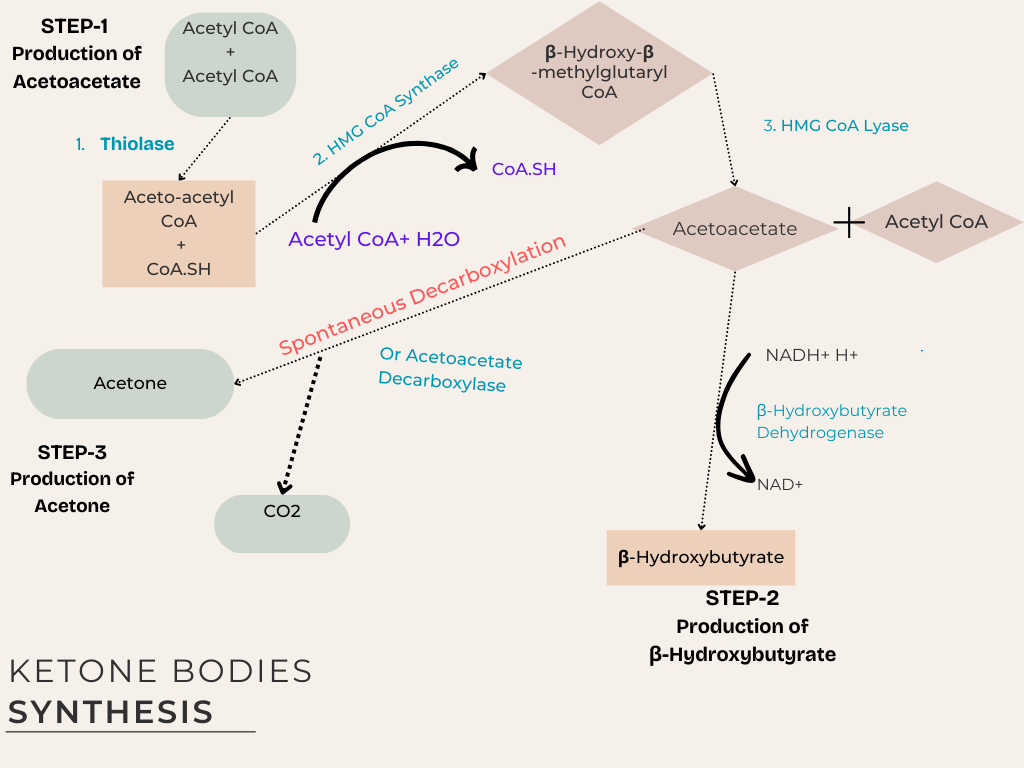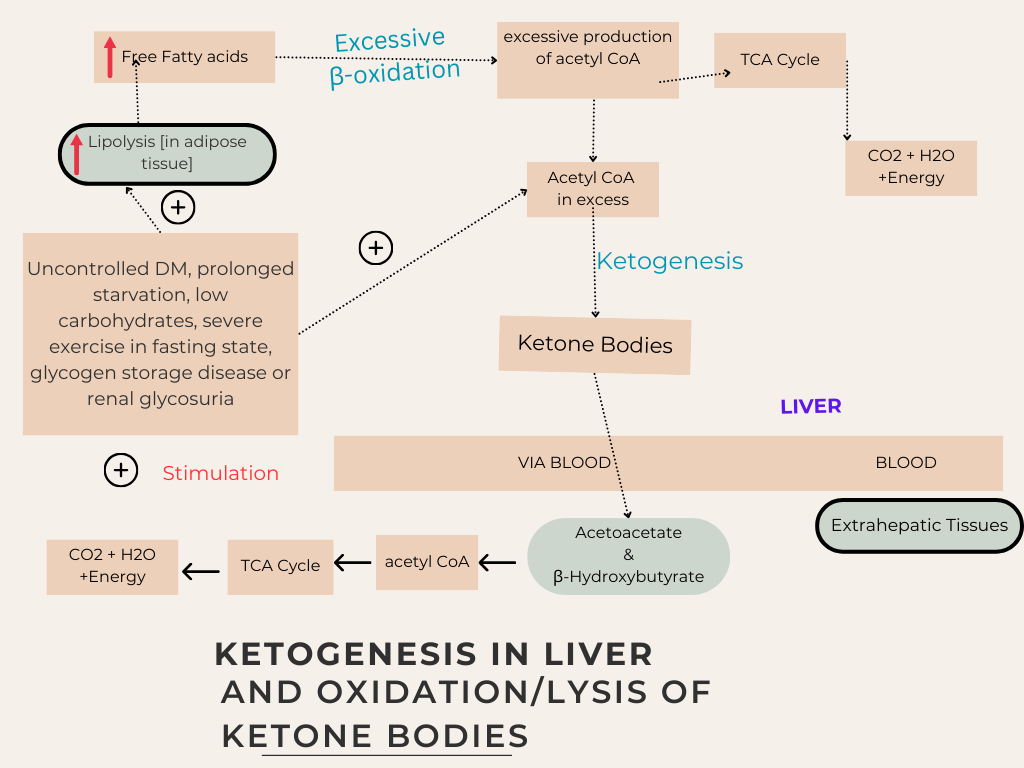Ketogenesis & Ketolysis
Join me as we explore the intricacies of how ketogenesis transforms fatty acids into ketone bodies and how ketolysis helps us harness that energy when glucose levels dip. Whether you’re prepping for exams or just curious about metabolic health, this post is packed with insights that are sure to enhance your understanding. In this post, we’re diving into the fascinating world of ketogenesis and ketolysis—two key metabolic processes that keep our bodies running smoothly, especially in a low-carb state.
DIABETES MELLITUS
9/7/20243 min read


Ketogenesis & Ketolysis
Understanding Ketogenesis and Ketolysis:
When discussing metabolic pathways, particularly, energy production, ketone bodies play a pivotal role. But what exactly are these mysterious molecules, and why does our body produce them? In this post, we’ll explore the definitions of ketone bodies, the processes of ketogenesis and ketolysis, and their significance in human metabolism.
What are Ketone Bodies?
In adipose tissues, the breakdown of triglycerides yields glycerol and free fatty acids. From Adipocytes, the free fatty acids diffuse in blood and are taken to various body tissues except for the brain, renal medulla, and RBCs, where they undergo β-oxidation in mitochondria to yield Acetyl CoA.
Under normal conditions, the Acetyl Coa formed in the liver enters the TCA cycle and is completely oxidized to carbon dioxide and water to provide energy. However, under certain metabolic/ physiologic and pathological conditions like diabetes mellitus, renal glycosuria, prolonged starvation, glycogen storage disease, infective hepatitis, etc, or when dietary carbohydrates are not sufficient the beta-oxidation of fatty acids is greatly accelerated in the liver. This results in more production of acetyl CoA. Excess of acetyl CoA cannot be fully utilized by the liver through the TCA cycle and is converted to ketone bodies namely acetoacetate beta-hydroxybutyrate and acetone.
Acetone is produced in smaller amounts than the other two ketone bodies, it is volatile and can be easily exhaled through the lungs. The ketone bodies are used as an alternative fuel for skeletal muscles cardiac muscles, renal cortex, etc.
In extrahepatic tissues containing mitochondria, the ketone bodies are reconverted to acetyl CoA which then enters the TCA cycle and is oxidized to carbon dioxide and water to provide energy. The tissues or cells that lack mitochondria, such as RBC’s renal medulla, cornea, and eye Lenses, etc, however, cannot utilize the ketone bodies because the oxidation of ketone bodies takes place only in mitochondria.
Ketone bodies are water-soluble molecules produced in the liver during periods of low carbohydrate availability. The primary types of ketone bodies include acetoacetate, beta-hydroxybutyrate, and acetone. These compounds serve as an alternative energy source when glucose levels are low—such as during fasting, prolonged exercise, or a ketogenic diet. By providing a backup fuel for tissues like the brain, which typically relies on glucose, ketone bodies are vital for maintaining energy homeostasis in the body.
Ketogenesis:
Ketogenesis is the metabolic process by which ketone bodies are synthesized from fatty acids and ketogenic amino acids in the liver. When carbohydrate intake is limited, the body enters a state of ketosis. This process begins with the mobilization of fatty acids from adipose tissue. In the liver, these fatty acids undergo beta-oxidation, generating acetyl-CoA. When acetyl-CoA accumulates—due to a shortage of oxaloacetate (often depleted in carbohydrate-restricted states)—it begins to condense, leading to the formation of acetoacetate. From there, acetoacetate can be further reduced to beta-hydroxybutyrate or spontaneously decarboxylated to form acetone. This intricate pathway illustrates how our body cleverly adapts to fuel shortages, ensuring that critical organs continue to function even in times of scarcity.
Ketolysis: Utilizing Ketone Bodies
On the flip side, ketolysis is the process by which ketone bodies are utilized for energy production in peripheral tissues. Once ketone bodies are released into the bloodstream from the liver, they can be taken up by various tissues, including the brain, muscles, and heart. In these tissues, ketone bodies are converted back into acetyl-CoA through a series of enzymatic reactions. This acetyl-CoA then enters the Krebs cycle, where it can be oxidized to produce ATP, the cell's energy currency.
Ketolysis effectively demonstrates the body’s ability to switch fuel sources, emphasizing the adaptability of human metabolism in response to changing energy demands.
Conclusion
Understanding ketogenesis and ketolysis is essential for grasping how the body manages energy reserves, particularly during times of nutritional stress. Ketone bodies not only serve as an alternative energy source but also illustrate the body's remarkable metabolic flexibility. As you continue your studies in medicine, keep these processes in mind—they’re crucial for understanding both normal physiology and various clinical conditions, including metabolic disorders and the therapeutic applications of ketogenic diets. The dance between ketogenesis and ketolysis is a testament to the body’s ability to adapt and thrive, even when resources are limited.


BLOG
Join us to explore medical biochemistry intricacies.
WRITE TO US
© 2024. All rights reserved.
